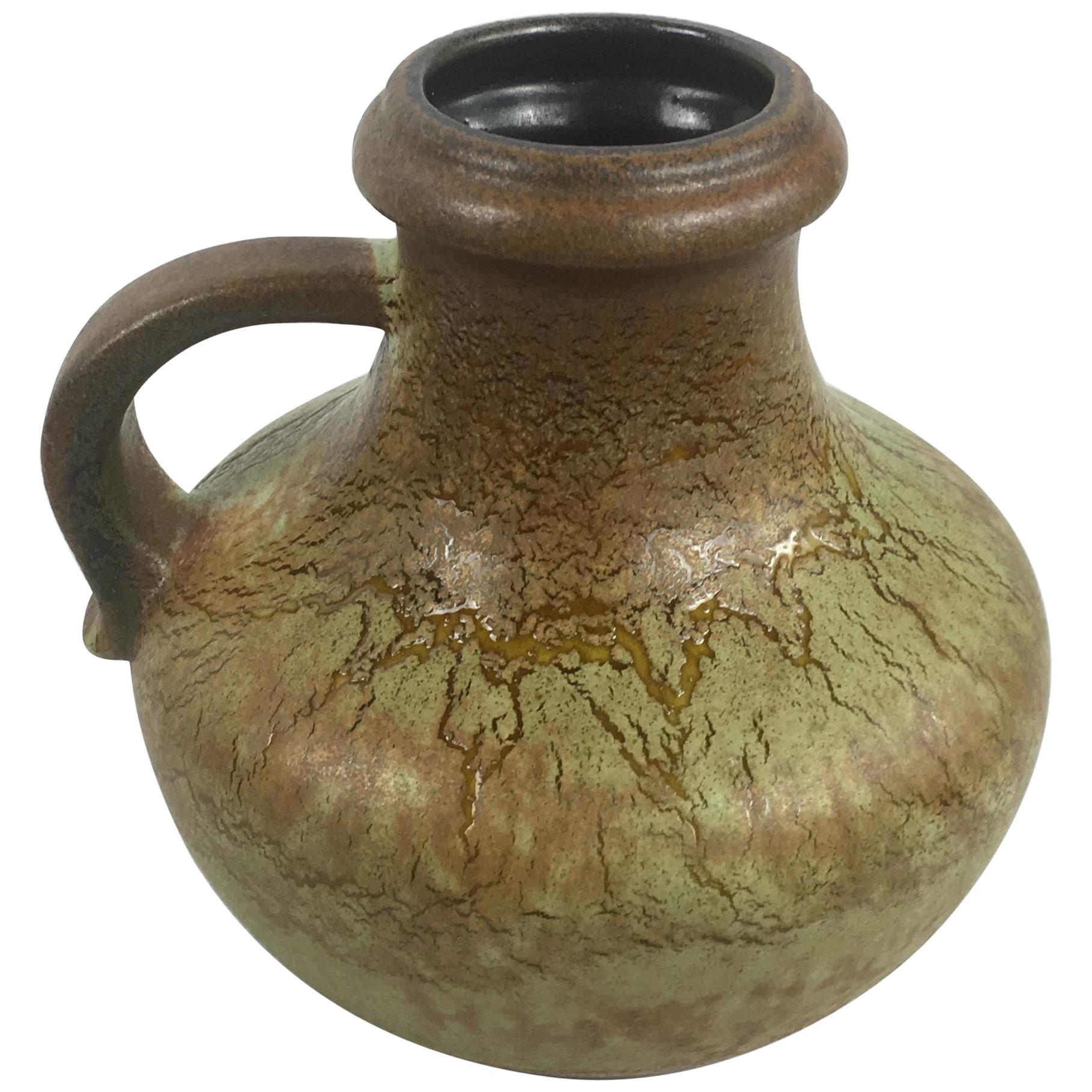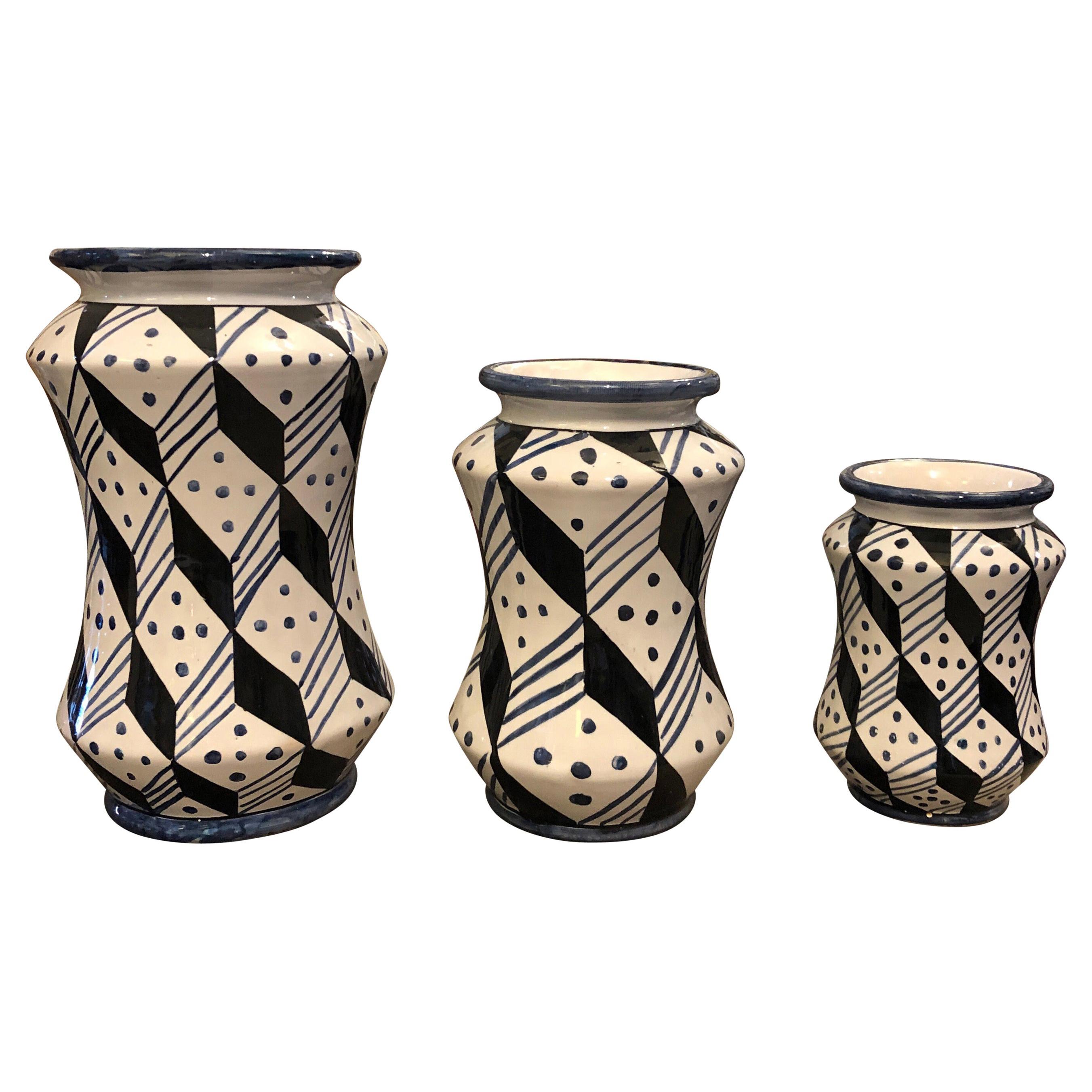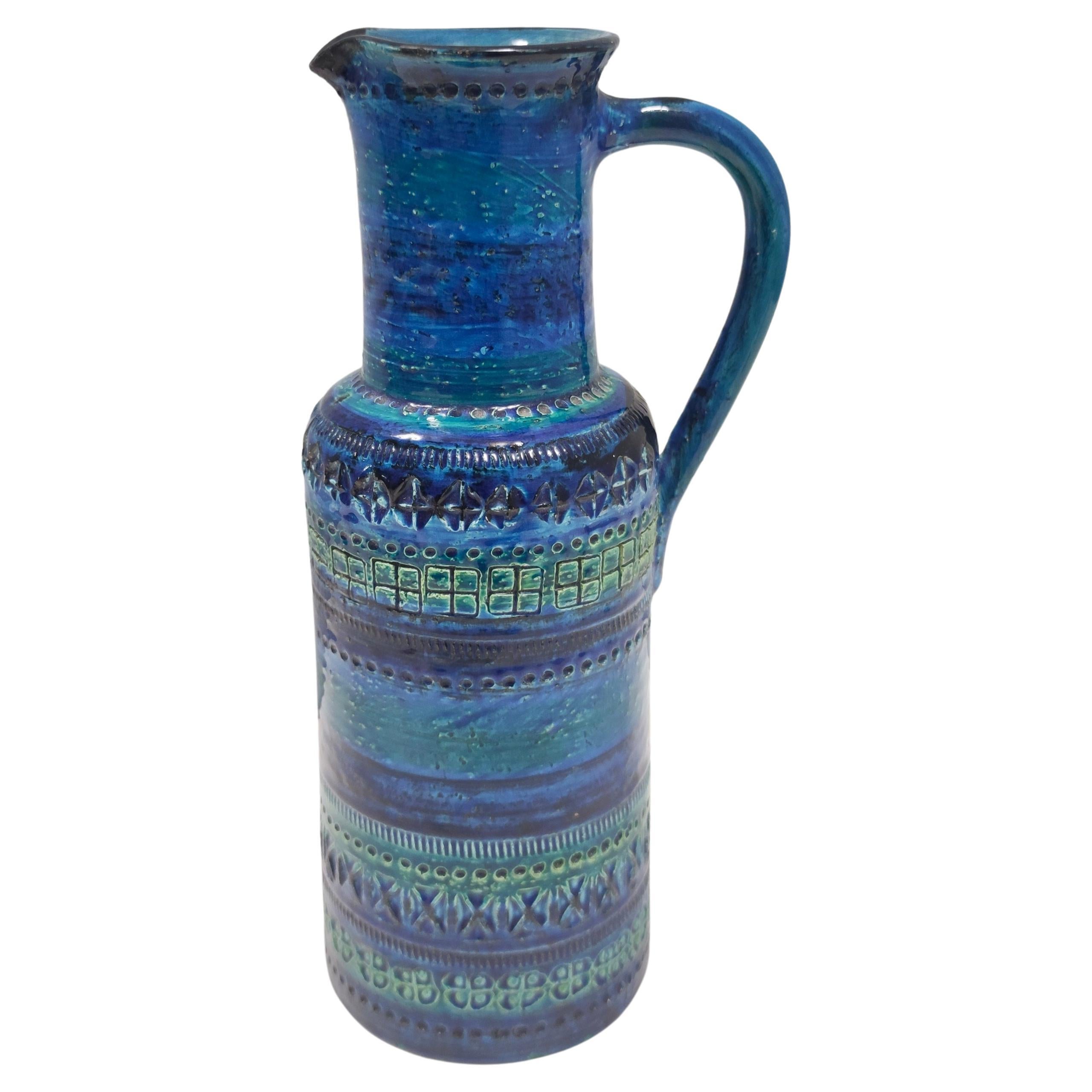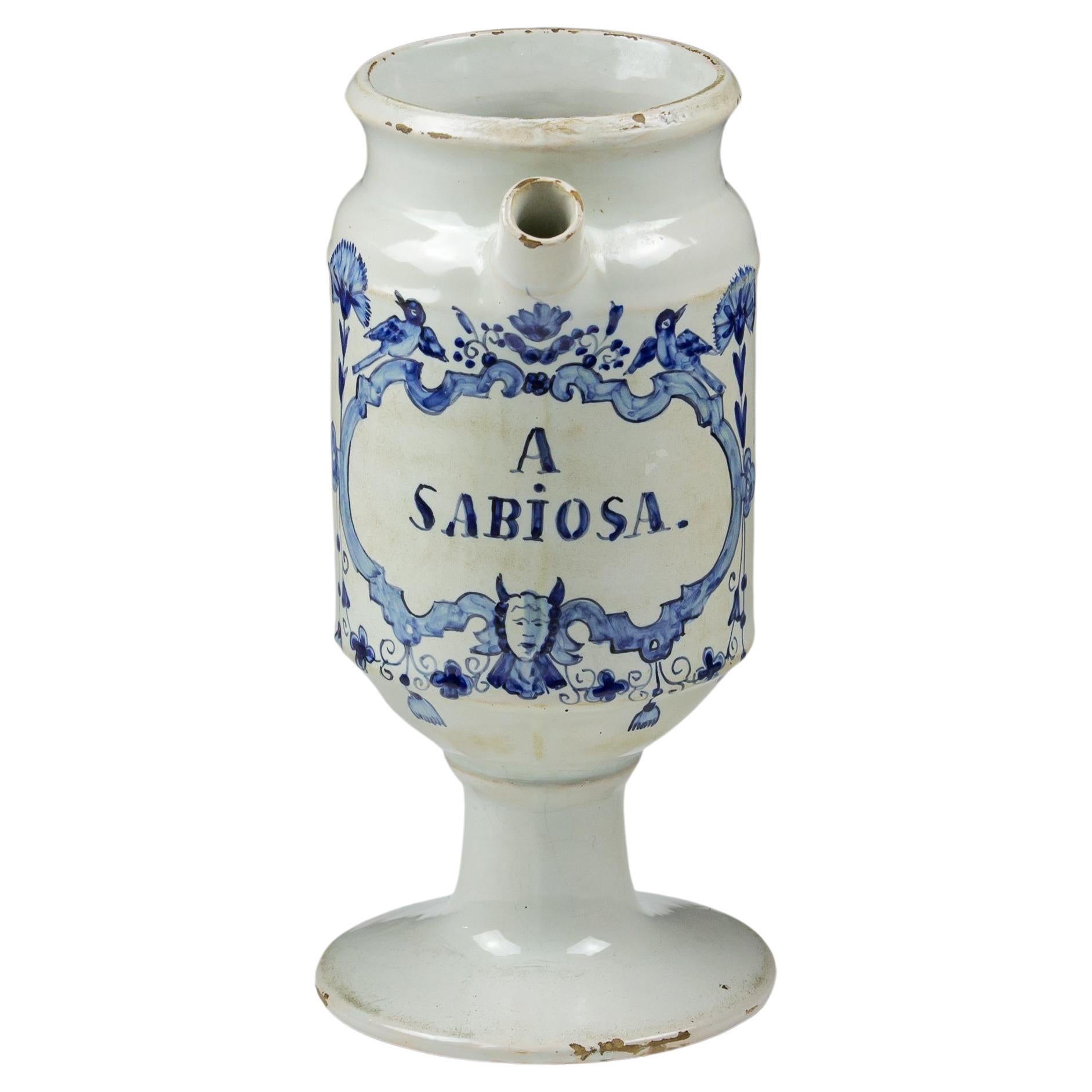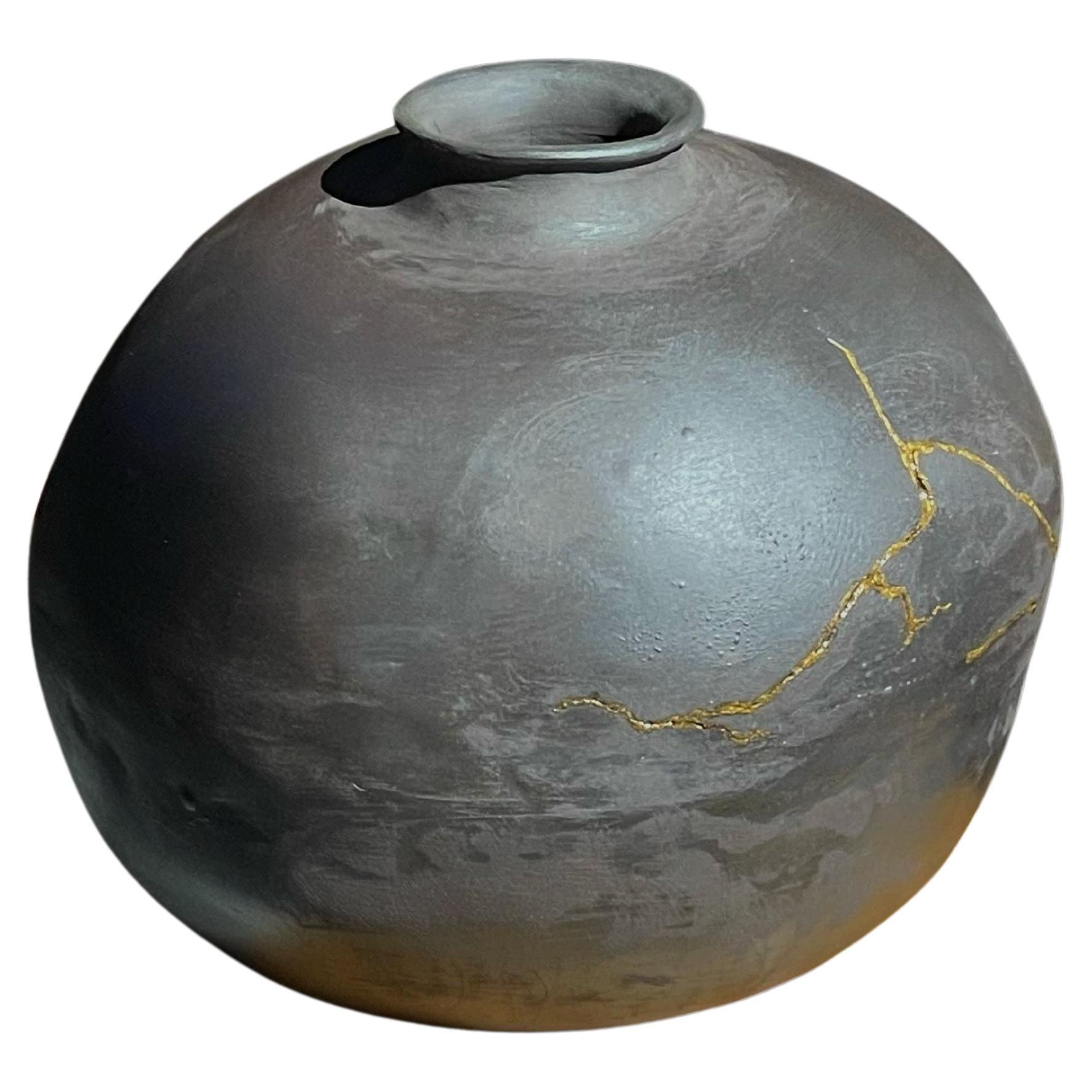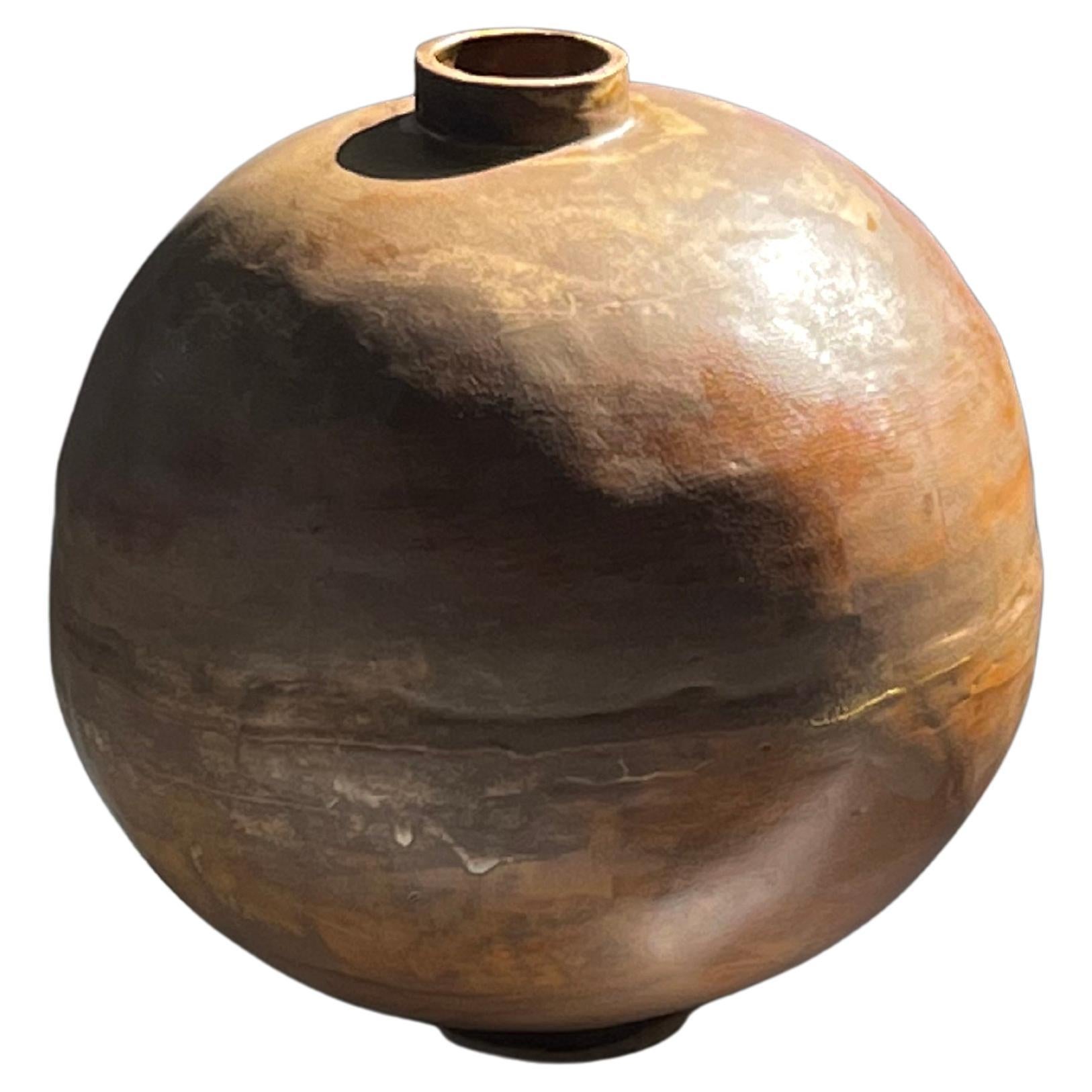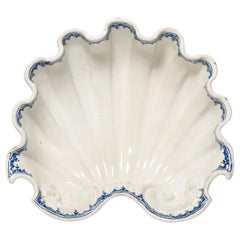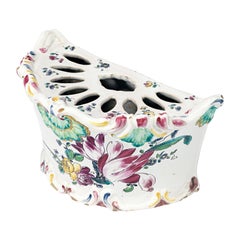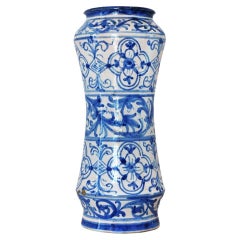
Ancient Maiolia Drag Jar or Albarello, Montelupo, 1490-1510
View Similar Items
Video Loading
Want more images or videos?
Request additional images or videos from the seller
1 of 21
Ancient Maiolia Drag Jar or Albarello, Montelupo, 1490-1510
About the Item
- Dimensions:Height: 7.49 in (19 cm)Diameter: 3.55 in (9 cm)
- Style:Renaissance (Of the Period)
- Materials and Techniques:Earthenware,Glazed
- Place of Origin:
- Period:
- Date of Manufacture:circa 1490-1510
- Condition:Wear consistent with age and use. Intact, signs of use on the rim and slight chips on the raised areas. Kiln-support marks.
- Seller Location:Milano, IT
- Reference Number:1stDibs: LU4352228204152
About the Seller
4.3
Vetted Seller
These experienced sellers undergo a comprehensive evaluation by our team of in-house experts.
Established in 1860
1stDibs seller since 2018
19 sales on 1stDibs
Typical response time: 6 hours
Associations
International Confederation of Art and Antique Dealers' Associations
More From This SellerView All
- Ancient Italian Maiolica Faenza, Ferniani Factory, Circa 1700By Ferniani FactoryLocated in Milano, ITCenterpiece light blue maiolica shell Ferniani factory, early period: 1693-1776 Faenza, 1700 circa 5.5 in x 14.72 in x 13.77 in (14 cm x 37.4 cm X cm 35) lb 4.40 (kg 2) State of con...Category
Antique Early 1700s Italian Baroque Ceramics
MaterialsMaiolica
- Ancient Italian Maiolica Faenza, Ferniani Factory, Circa 1700By Ferniani FactoryLocated in Milano, ITCenterpiece white maiolica shell Ferniani factory, early period: 1693-1776 Faenza, circa 1700 Measures: 5.6 in x 14.72 in x 13.46 in (14.3 cm x 37.4...Category
Antique Early 1700s Italian Baroque Ceramics
MaterialsMaiolica
- Ancient Maiolica Flower Pot Pasquale Rubati Factory, Milan Circa 1770By Pasquale RubatiLocated in Milano, ITMaiolica flower pot “a mezzaluna” decorated with tulip Pasquale Rubati Factory Milan, circa 1770. Measures: 4.7 in x 4.7 in x 8.6 in 12 cm x 12...Category
Antique 1770s Italian Rococo Ceramics
MaterialsMaiolica
- Pair of Ancient Italian Maiolica Flower Pots Milan, Rubati Factory, 1770 circaBy Pasquale RubatiLocated in Milano, ITMaiolica flower pot “a mezzaluna” decorated with trompe l’oeil Pasquale Rubati Factory Milan, circa 1770 Measures: each 4.7 in (cm 12) x 5 in (c...Category
Antique 1770s Italian Rococo Ceramics
MaterialsMaiolica
- Ancient Italian Renaissance Maiolica Crespina, Faenza, 1580 CircaLocated in Milano, ITCrespina Faenza, last quarter of the 16th century Maiolica painted in two colors, light blue and yellow, on a thick, rich layer of white enamel. It measures 2.24 in (5.7 cm) in height, 6.10 in (15.5 cm) in diameter. lb 0.55 (kg 0.25) State of conservation: mimetic restoration. The small cup has a raised central “umbone”, a perforated brim and a shaped rim. It rests on a high jutting foot. The "crespina" shape, in some inventories is cited as "tacce de frute" (fruit cups). It was particularly appreciated in the Renaissance and has variants based on the formal types and the different sizes. The decoration, made according to the dictates of the “compendiario” style, used few standardized colors: blue and yellow on a thick white and shiny enamel, deliberately chosen as the colour which was most reminiscent of silver. This choice derived from a trend in creative design of the era: the shapes used in the molds were often taken from metal objects. An idea which would last throughout the Renaissance. The work shows, in the middle of the “umbone”, a winged putto stepping forward while playing a long thin trumpet. The depiction of the putto is fully representative of the repertoire of the Faenza workshops of the sixteenth century. Some specimens with this type of decoration have been published in a volume by Carmen Ravanelli Guidotti: there appears the whole productive repertoire of this fundamental moment of transition between the taste for the “istoriato” style and the great simplification of decoration in the “compendiario” period. This style, in its simplicity, however, saw its expression in a rather varied collection of decorative subjects, including old-fashioned busts...Category
Antique 16th Century Italian Renaissance Ceramics
MaterialsMaiolica
- Rococo Italian Maiolica Flower Pot Pasquale Rubati, Milano, 1770 circaBy Pasquale RubatiLocated in Milano, ITMaiolica flower pot “a mezzaluna” with support feet decorated with little bunches of flowers Pasquale Rubati Factory Milan, circa 1770 5.5 in X ...Category
Antique 1770s Italian Rococo Ceramics
MaterialsMaiolica
You May Also Like
- Italian Neapolitan Hand-painted Blue and White Ceramic Albarello, 1800sLocated in Roma, ITThis wonderful Albarello was found in a palazzo in Naples and dates from the mid 1800s. It would once have been used for herbal remedies or spices but today makes for a wonderful dec...Category
Antique Early 19th Century Italian Renaissance Ceramics
MaterialsCeramic
$354 Sale Price50% Off - Spanish Terracotta Albarello Vase / Vessel, 1960sLocated in Barcelona, ESGlazed Terracotta vase in shades of green, blue, beige Traditional spanish glazed ceramic vase "Albarelo" in green and blue pastel colors decoration with brown accents. It has a mark on the bottom (IOX). Spain, circa 1960s. Popular pottery; Medical Ceramic-ware. Measures: 21 cm H x 14,5 cm diameter // 8,26 in H x 5,70 in diameter. More glazed and unglazed terracotta spanish...Category
20th Century Spanish Folk Art Ceramics
MaterialsTerracotta, Ceramic, Earthenware
- The Albarello Jar by CoseincorsoLocated in Geneve, CHThe Albarello Jar by Coseincorso Dimensions: Ø 16 x H 37 cm. Materials: Ceramic with unleaded glaze. The Albarello is inspired by medicinal jars used to hold apothecaries’ ointment...Category
2010s Italian Modern Jars
MaterialsCeramic
$423 / item - Midcentury Studio Pottery Jar or Jug for Scheurich KeramikBy Scheurich KeramikLocated in Miami, FLA fine handcrafted jar or jug with prominent green and brown hues. Bottom raised letters Scheurich Kermik, W. Germany.Category
20th Century German Mid-Century Modern Jars
MaterialsCeramic
- Set of Three Unique Pieces Hand Painted Sicilian Terracotta Albarello VasesBy Antiques Fuori le MuraLocated in Aci Castello, ITThree Sicilian vases named Alberello totally hand painted made exclusively for our shop. They are unique pieces signed on the bottom Antiques fuori le mura. It's a revisiting of antique pharmacy vases...Category
2010s Sicilian Mid-Century Modern Ceramics
MaterialsTerracotta
- Postmodern Rimini Blue Ceramic Vase by A. Londi and F. Montelupo for BitossiBy Aldo Londi, Bitossi, Flavia MontelupoLocated in Bresso, LombardyThis is a Rimini blue vase from the 1970s. Made in Italy. It was designed by Aldo Londi and produced by Flavia Montelupo, also known as Bitossi. Bitos...Category
Vintage 1970s Italian Post-Modern Vases
MaterialsCeramic
Recently Viewed
View AllMore Ways To Browse
Ancient Silver
Ancient Glass
Ancient Ceramics
Blue Glass Jars
Blue Glass Jar
Iranian Silver
Iran Silver
Antique Glass Container
Antique Glass Containers
Wide Mouth Glass
Connor Glass
Antique Silver Containers
16th C Italian
Small Glass Jar
Covered Glass Jar
Antique Cat Collection
Covered Glass Jars
Double Rimmed Glasses



